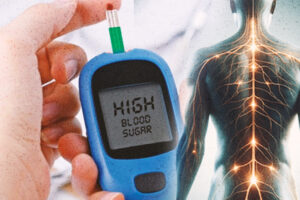By Leandrae T. Lapinig
Today’s generation may not know Richard Burton, the British actor who starred in 61 films and received seven Oscar nominations (but failed to win the prestigious award). He was known as an alcoholic but only very few knew that he had hemophilia, too. It was a condition he had known about since childhood.
Elizabeth Taylor, who became his wife twice, learned of his illness only in May 1964. This was how she knew of the disease as told in her biography, Elizabeth. Richard was upset after being booed as the lead in Hamlet on Broadway. When he returned home, he went directly to the bar and drank wine.
Already drunk, he argued with his wife, who was watching a Peter Sellers movie on television. During their heated argument, Richard kicked the television screen with his bare foot and cut a toe to the bone. The blood flow wouldn’t stop for an hour.
Richard was taken to the hospital, where he received a dozen stitches. There, Elizabeth discovered that Richard suffered from hemophilia.
In his memoir, The Richard Burton Diaries, he wrote about the challenges of living with the disease, including the constant fear of bleeding and the need to be vigilant about his health.
You may not know Richard Burton and you need to know about hemophilia, a disease characterized by slow blood clotting and excessive bleeding even from superficial injuries. A tooth extraction, for instance, may necessitate as many as 100 blood transfusions. An operation may result in 1,000 transfusions.
National Hemophilia Awareness Month
During her time, then President Gloria Macapagal-Arroyo signed Proclamation No. 1478 which declared April as National Hemophilia Awareness Month and April 17 as National Hemophilia Day.
About 10,000 Filipinos have hemophilia, according to the World Hemophilia Federation. Federation. Unfortunately, only ten percent (1,000) of people with hemophilia around the country have been identified. About 9,000 of those having the disease don’t know they have it as they have never been diagnosed.
Another sad thing: less than 10% of those diagnosed Filipinos with hemophilia have received adequate treatment. Many of them have become disabled simply because they have no means of paying the exorbitant cost of medicine and other therapeutic products.
Some reports said that a mild bleed in the joints can cost P30,000 to P50,000 per treatment. Treatment of severe bleeds like those that affect internal organs such as the gastrointestinal tract or the brain can cost hundreds of thousands, if not millions, of pesos.
As it is a rare disorder, no one seems to pay attention to hemophilia. Aside from 10,000 people, there are another one million Filipinos who are possibly affected with von Willebrand’s disease and other bleeding disorders.
According to the US National Library of Medicine, “bleeding disorders are a group of conditions in which there is a problem with the body’s blood clotting process. These disorders can lead to heavy and prolonged bleeding after an injury. Bleeding can also begin on its own.”
Blood connection
An adult person has more than a gallon of blood in his body. According to The Merck Manual of Medical Information, blood is a complex mixture of plasma (the liquid component), white blood cells, red blood cells and platelets.
Plasma constitutes more than half of the blood’s volume and consists mostly of water containing dissolved salts (called electrolytes) and proteins. Red blood cells (also called erythrocytes) make up about 40% of the blood’s volume. White blood cells (leukocytes) are fewer in number than red blood cells, with a ratio of about 1 white blood cell to every 660 red blood cells.
Normal blood clotting involves blood components, called platelets. Also known as thrombocytes, they are cell-like particles smaller than red or white cells, with a ratio of about a platelet to every 20 red blood cells.
When a person bleeds, his body normally pools blood cells together to form a clot to stop the bleeding. The clotting process is encouraged by certain blood particles (platelets and plasma proteins). Hemophilia occurs when a person has a deficiency in one of these clotting factors.
“Small cuts usually aren’t much of a problem,” says the U.S.-based nonprofit organization Mayo Clinic. “The greater health concern is deep bleeding inside your body, especially in your knees, ankles, and elbows. That internal bleeding can damage your organs and tissues and may be life-threatening.”
Several types
Actually, there are several types of hemophilia and they are classified as A, B, or C, according to which clotting factor is deficient. Hemophilia News Today gives this brief description of each:
Hemophilia A: This is caused by a missing or defective factor VIII protein. It has three stages, depending on the ratio of clotting protein in the blood: mild, moderate, and severe. People with type A bleed longer than others, internally or externally. Those with mild cases generally bleed only after serious injury, trauma, or surgery.
Hemophilia B: Caused by a missing or defective factor IX clotting protein, this is rarer than type A. However, the severity and symptoms are similar. A subtype of hemophilia B, known as hemophilia B Leyden, causes episodes of excessive bleeding in childhood, which gradually disappear after puberty.
Hemophilia C: A missing or defective factor XI clotting protein causes this type. Unlike types A and B, symptoms don’t correlate with factor XI levels in the blood. People with lower levels may bleed less than those with higher levels of the clotting protein. Patients often experience nosebleeds or soft tissue bleeds, as well as hemorrhaging after tooth extraction.
According to the Mayo Clinic, the signs and symptoms of spontaneous bleeding include: unexplained and excessive bleeding from cuts or injuries, or after surgery or dental work; many large or deep bruises; unusual bleeding after vaccinations; pain, swelling or tightness in your joints; blood in your urine or stool; and nosebleeds without a known cause. In infants, unexplained irritability is a sign.
On the other hand, emergency signs and symptoms of hemophilia include: sudden pain, swelling and warmth in large joints, such as knees, elbows, hips and shoulders, and in your arm and leg muscles; bleeding from an injury, especially if you have a severe form of hemophilia; painful, prolonged headache; repeated vomiting; extreme fatigue; neck pain; and double vision.
Hemophilia may be diagnosed between the age of 9 months and two years old, sources claim. In some cases, a person may not be aware that he has mild hemophilia until he undergoes surgery or experiences an injury.
Sex-linked disorder
Medical science considers hemophilia a sex-linked disorder: it occurs more often in men than in women. However, there are bleeding disorders that are not sex-linked but still can be inherited. The von Willebrand’s Disease is one of them. It is a hereditary deficiency or abnormality of the von Willebrand factor in the blood, a protein that affects platelet function.
Although hemophilia is hereditary by nature, it can also appear in people “even without a history of ailment in the family.” As Andrea Trinidad, president of Hemophilia Advocates-Philippines, told Philippine Daily Inquirer: “Mutation starts at birth. When the baby is delivered, he or she already has hemophilia even without family history.”
The Mayo Clinic said that about 30% of people with hemophilia “have no family history of the disorder.” It is called acquired hemophilia, which is associated with pregnancy, immune conditions, cancer, and multiple sclerosis. “Acquired hemophilia is a rare variety of the condition that occurs when a person’s immune system attacks clotting factors in the blood,” the Mayo Clinic explained in its website.
No cure yet
There’s no cure yet for hemophilia, the Mayo Clinic claims. “But with proper treatment and self-care, most people with hemophilia can maintain an active, productive lifestyle,” the Minnesota-based health organization states.
According to the US National Health, Lung and Blood Institute (NHLBI), the main treatment for hemophilia is called replacement therapy. Concentrates of clotting factor VIII (for hemophilia A) or clotting factor IX (for hemophilia B) are slowly dripped or injected into a vein. These infusions help replace the clotting factor that’s missing or low.
Replacement therapy, however, has some complications, which include developing antibodies (proteins) that attack the clotting factor; developing viral infections from human clotting factors; and damage to joints, muscles, or other parts of the body resulting from delays in treatment. – ###








